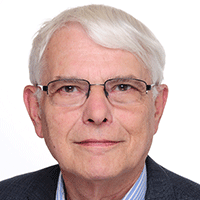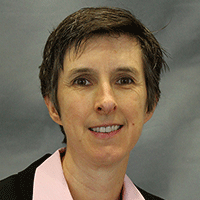Wednesday, July 28th at 9:50 AM EASTERN

Prof. Dr. W. Arnold
Department of Materials
Saarland University
Biography: W. Arnold obtained a diploma in physics (equivalent to a master degree) in 1970 and a PhD in Solid State Physics in 1974 both from the Technical University Munich, Germany. He then held various positions as a researcher in Solid State and Applied Physics in academia and industry in France, USA, Switzerland, and in Germany. From 1980 until retirement in 2008, he was employed at the Fraunhofer IZFP, Saarbrücken, Germany, as a department head developing and applying methods for non-destructive materials characterization.
W.A. was appointed professor of materials technology in 1989 at the Saarland University, Saarbrücken. W.A. guided 160 undergraduate students in their diploma, master theses and study projects and 33 PhDs.
Parallel he served in various scientific committees for research institutes and research organizations in Germany, France, and in Mexico. From 2001 to 2014 he served in various selection committees of the Alexander von Humboldt Foundation. W.A. is a fellow of the Institute of Physics in London and an honorary fellow of the Indian Society of Non-Destructive Testing in Delhi. W.A. was associate editor of various scientific journals, and still is for "Research in Non-Destructive Evaluation".
Since 2009 he has been a guest professor at the "I. Physikalische Institut" of the Georg-August Universität Göttingen, Germany, and in addition works as a self-employed consultant.
Lecture Title: Non-Destructive Materials Characterization on a Small Scale Using Atomic Force Microscopy
Abstract: Since their invention now almost 40 years ago, atomic force microscopy (AFM) techniques have attracted vast attention for surface characterization of materials. There are many modes of operation for an AFM in order to measure mechanical, electrical, magnetic, and other properties, either in the attractive or repulsive regime. The ultrasonic atomic force microscopes are very much related to techniques used in non-destructive materials characterization. These techniques exploit the vibrational modes of AFM cantilevers which range from some kHz to several MHz. In these modes the cantilever vibrates in contact mode in one of its flexural or torsional resonances. Images can be obtained where the contrast depends on the local indentation modulus or local friction, which is evaluated quantitatively from the contact-resonance frequencies after calibration procedures. The lateral resolution at the surface is defined by the tip-sample contact radius ac, with typical values of 10 nm or less. Applications are presented of the AFM contact-resonance technique to measure the local elastic indentation modulus M and damping factor Q-1 in nanocrystalline materials, in metals with complicated microstructures, in shape-memory films, and in metallic glasses. The relation of Q-1 to the ultrasonic absorption will be discussed.
There were many efforts to establish ultrasonic AFM as a tool for subsurface ultrasonic imaging on a nanoscale. In particular, attention was paid to studies of the physical contrast mechanism based on contact mechanics, in order to enhance contrast and detection depth of subsurface features. A promising new path is based on using GHz ultrasonic waves which are amplitude-modulated at a cantilever contact-resonance. Due to the nonlinear contact forces, the signals can be demodulated and detected by the cantilever. The GHz carrier frequency enables for detecting contrast for small defects by ultrasonic scattering at depths much deeper than the deformation volume caused by Hertzian contact mechanics. Applications will be presented for detecting subsurface defects, including dislocations, voids and interfaces in functional materials and devices visualizing embedded inclusion, and imaging subcellular structures in biological materials. Finally, the similarity and the differences to the well-known Fokker bond test in NDE will be discussed.
Thursday, July 29th at 9:30 AM EASTERN

Dr. Kara Peters
Department of Mechanical and Aerospace Engineering
North Carolina State University
Raleigh, NC, USA
Biography: Dr. Kara Peters is a Professor in the Department of Mechanical and Aerospace Engineering at North Carolina State University, Associate Department Head and the Director of Graduate Programs. She received her PhD in Aerospace Engineering from the University of Michigan in 1996. For her dissertation work, she received the Ivor K. McIvor Award for Applied Mechanics at the University of Michigan. Following her PhD, Dr. Peters worked as Post-Doctoral Researcher in the Laboratory of Applied Mechanics at the Ecole Polytechnique Fédérale de Lausanne (Swiss Institute of Technology at Lausanne).
Dr. Peters is a member of the ASME Adaptive Structures and Material Systems Technical Committee and was the chair of the SPIE Smart Structures and Materials Symposium in 2010 and 2011. She is a Fellow of SPIE. Dr. Peters served as a rotator as the Program Manager of the Mechanics of Materials and Structures Program at the National Science Foundation from 2015-2018. Dr. Peters’ research focuses on the development of new experimental mechanics techniques for extreme environments. Many of the techniques are based on optical fiber sensors.
Lecture Title: Acoustic-Optical Interactions in Optical Fiber Sensors for Ultrasonic Inspection of Structures
Abstract: Fiber Bragg grating (FBG) sensor networks have many advantages for the measurement of Lamb waves in large structures for structural health monitoring applications. Amongst these are their immunity to corrosion and to electromagnetic interference. However, potentially their greatest advantage is the ability to multiplex a large number of sensors into a few optical fibers, permitting the coverage of a large area with reasonable a spatial density. Another advantage is the ability of optical fibers to carry multi-modal information. This information can be encoded in different optical modes in a multi-mode fiber or in different types of modes. For example, optical fibers have also recently been demonstrated to be excellent waveguide for acoustic modes. In particular, the longitudinal mode in an optical fiber is an excellent means to transport acoustic information along an optical fiber as it has low attenuation and is non-dispersive up to a frequencies of a few MHz.
This means that sensing does not have to be performed at the optical fiber is bonded to the structure, but instead Lamb waves can be converted into propagating acoustic modes in optical fibers. These modes can be transmitted to different sensor locations within the optical fiber. This presentation discusses the physical characteristics of these optical fiber acoustic modes and their use to increase the signal to noise ratio of the collection of Lamb wave information. Experimental verifications of the physical behavior of these modes using micro-laser Doppler vibrometry is also presented. Coupling of acoustic modes between multiple optical fibers will be discussed for sensor network applications.